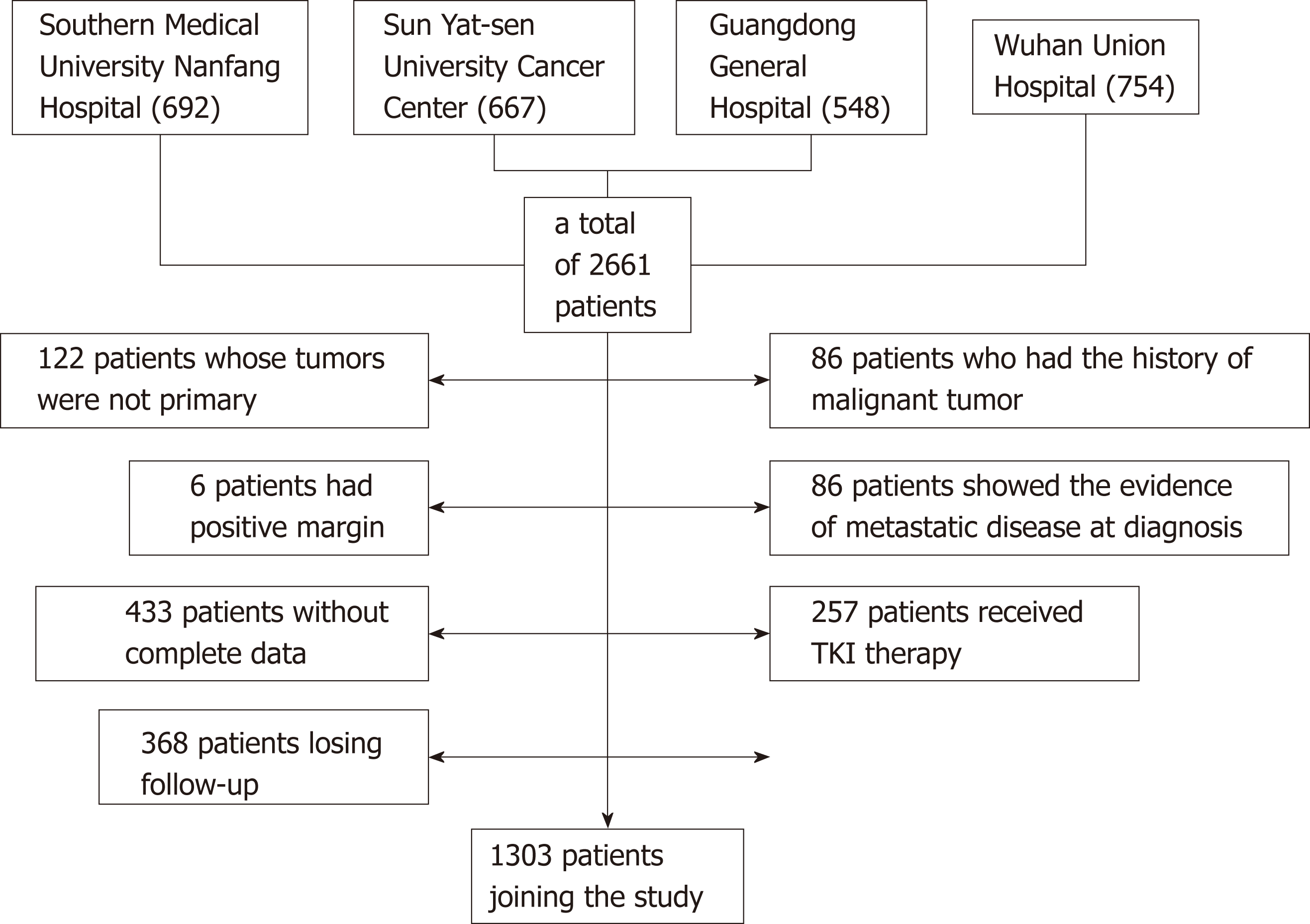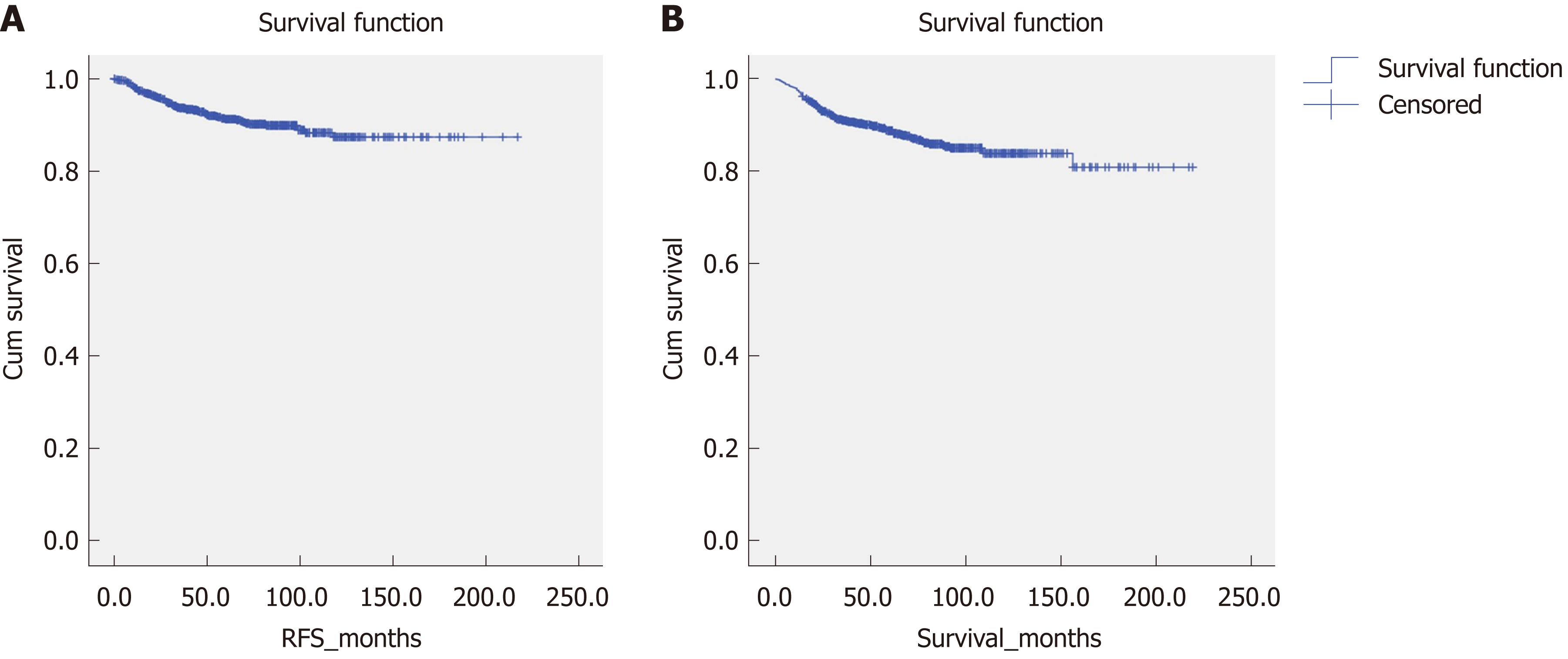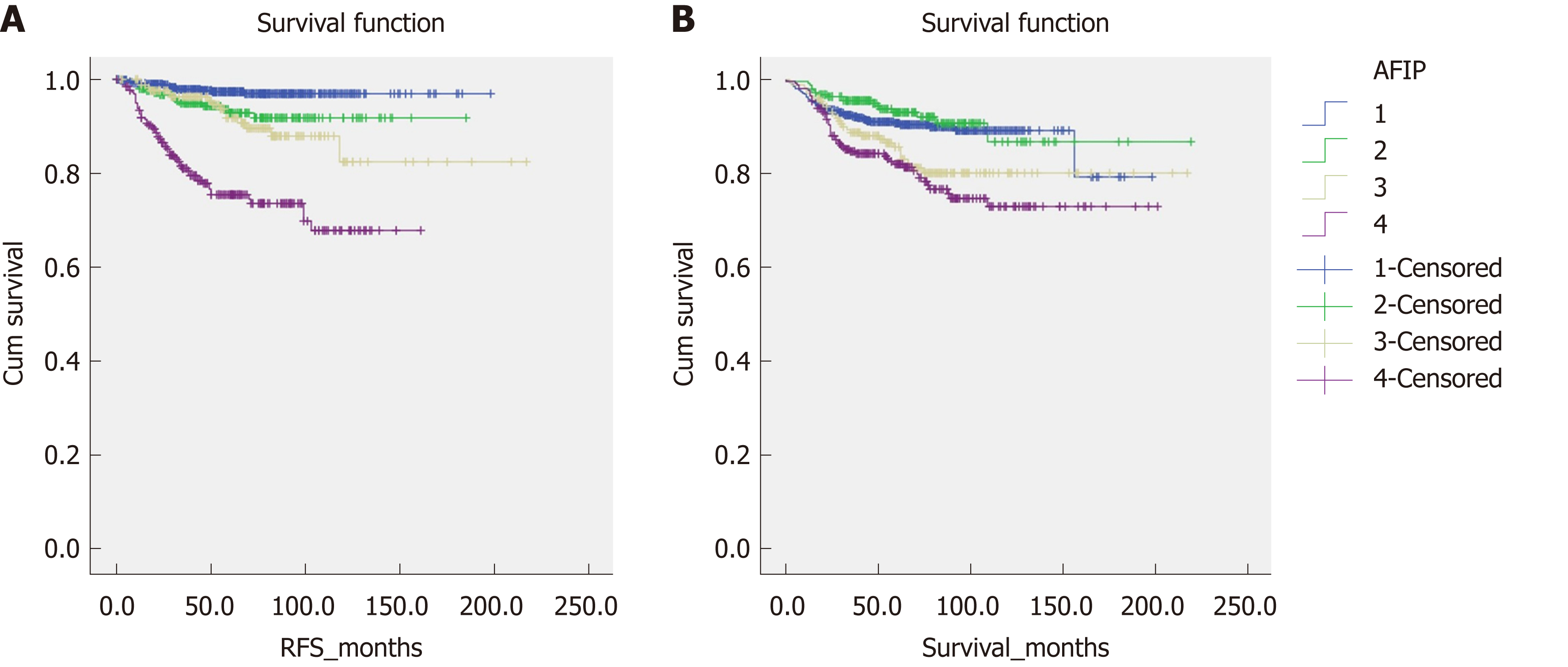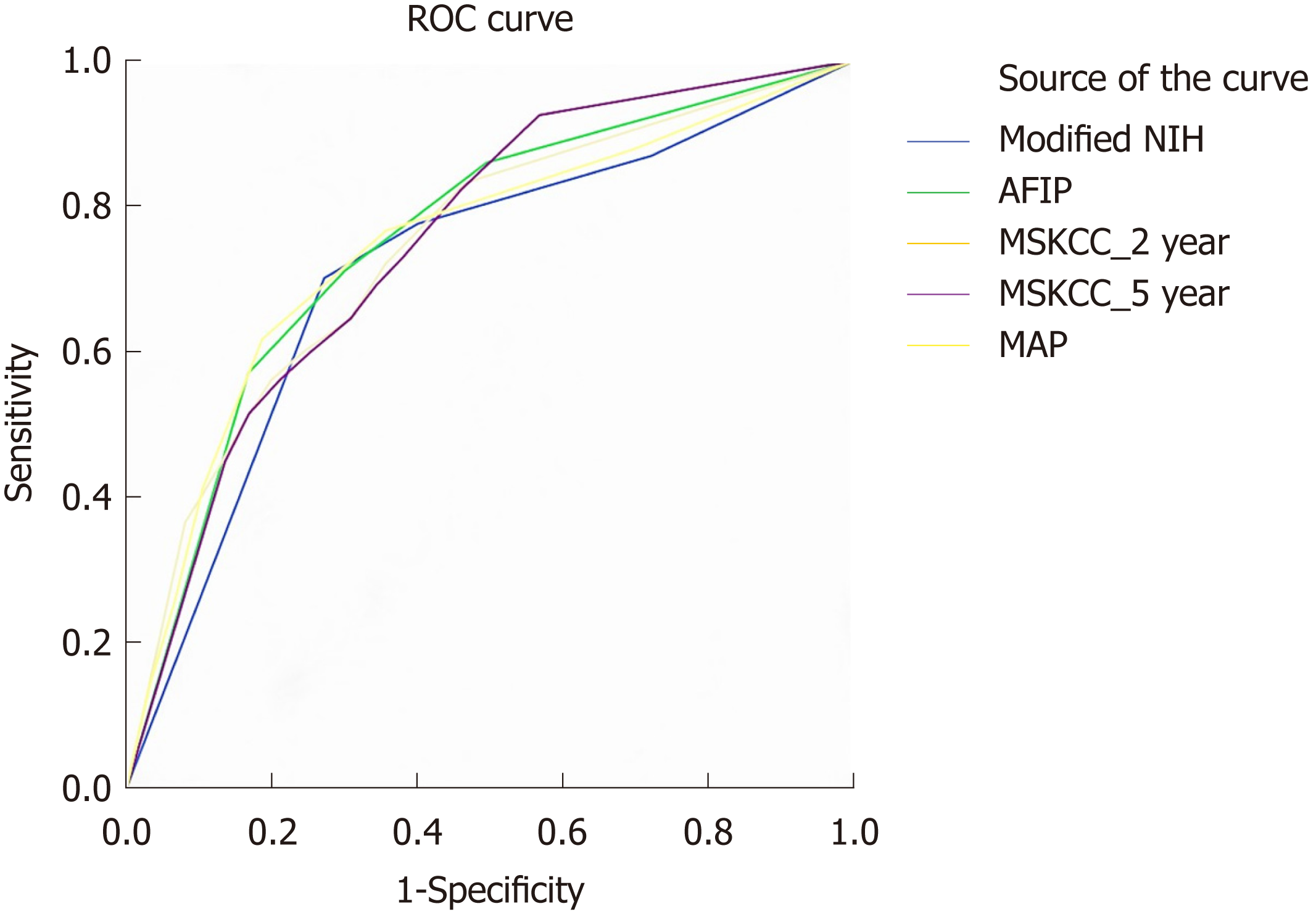Copyright
©The Author(s) 2019.
World J Gastroenterol. Mar 14, 2019; 25(10): 1238-1247
Published online Mar 14, 2019. doi: 10.3748/wjg.v25.i10.1238
Published online Mar 14, 2019. doi: 10.3748/wjg.v25.i10.1238
Figure 1 Flow diagram for extracting eligible cases for comparison.
TKI: Tyrosine kinase inhibitor.
Figure 2 Recurrence-free survival and overall survival for the entire cohort of patients.
A: Recurrence-free survival; B: Overall survival. RFS: Recurrence-free survival.
Figure 3 Recurrence-free survival and overall survival between different groups according to the Armed Forces Institute of Pathology criteria.
A: Recurrence-free survival; B: Overall survival. RFS: Recurrence-free survival; AFIP: Armed Forces Institute of Pathology.
Figure 4 Receiver operating characteristic curve analysis of the risk of gastrointestinal stromal tumor recurrence.
MAP: Contour maps; MSKCC_2 year: The 2-year predicated probability of recurrence-free survival; MSKCC_5 year: The 5-year predicated probability of recurrence-free survival; NIH: National Institute of Health; MSKCC: Memorial Sloan Kettering Cancer Center; AFIP: Armed Forces Institute of Pathology; ROC: Receiver operating characteristic.
- Citation: Chen T, Ye LY, Feng XY, Qiu HB, Zhang P, Luo YX, Yuan LY, Chen XH, Hu YF, Liu H, Li Y, Tao KX, Yu J, Li GX. Performance of risk stratification systems for gastrointestinal stromal tumors: A multicenter study. World J Gastroenterol 2019; 25(10): 1238-1247
- URL: https://www.wjgnet.com/1007-9327/full/v25/i10/1238.htm
- DOI: https://dx.doi.org/10.3748/wjg.v25.i10.1238
















